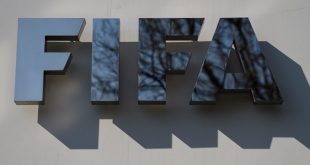 A total of 4,716 international transfers were completed in men’s football during the 2024 January window, another increase of 0.6% compared to the previous January window, according to FIFA’s International Transfer Snapshot.
A total of 4,716 international transfers were completed in men’s football during the 2024 January window, another increase of 0.6% compared to the previous January window, according to FIFA’s International Transfer Snapshot.
In women’s football, spending on transfer fees reached a new record with USD 2.1 million, which is 165.5% higher than in January 2023. The total number of international women’s transfers remained relatively stable, with 357 transfers across borders, an increase of 0.3% compared to January 2023.
With total spending on transfer fees of USD 1.46 billion in men’s football during the 2024 January window, clubs’ total outlay is 8.2% short of the record spending observed in January 2023, yet still at the second highest level ever.
French clubs topped the table for spending on international transfer fees of male players in January 2024, with a total outlay of USD 291.9 million, more than double the amount they spent in the previous January window.
January spending by English clubs decreased sharply by almost 80% compared to their record spending in January 2023. Nevertheless, their combined total still represented the second highest out of all the associations.
The list of incoming transfers in the women’s game was jointly headed by England and Spain, each with 29 transfers, whereas Sweden and the USA were joint top of the table for outgoing transfers, with 30 apiece.
This is the fourth consecutive year that FIFA has published such a snapshot shortly after the conclusion of the international January transfer window, providing an overview of global transfers involving both male and female players.
FIFA will publish the next snapshot in September 2024 after the conclusion of the mid-year registration period. The full snapshot can be found below, or visit legal.fifa.com .
 Arunava about Football A look at football & the world through my eyes!
Arunava about Football A look at football & the world through my eyes!



